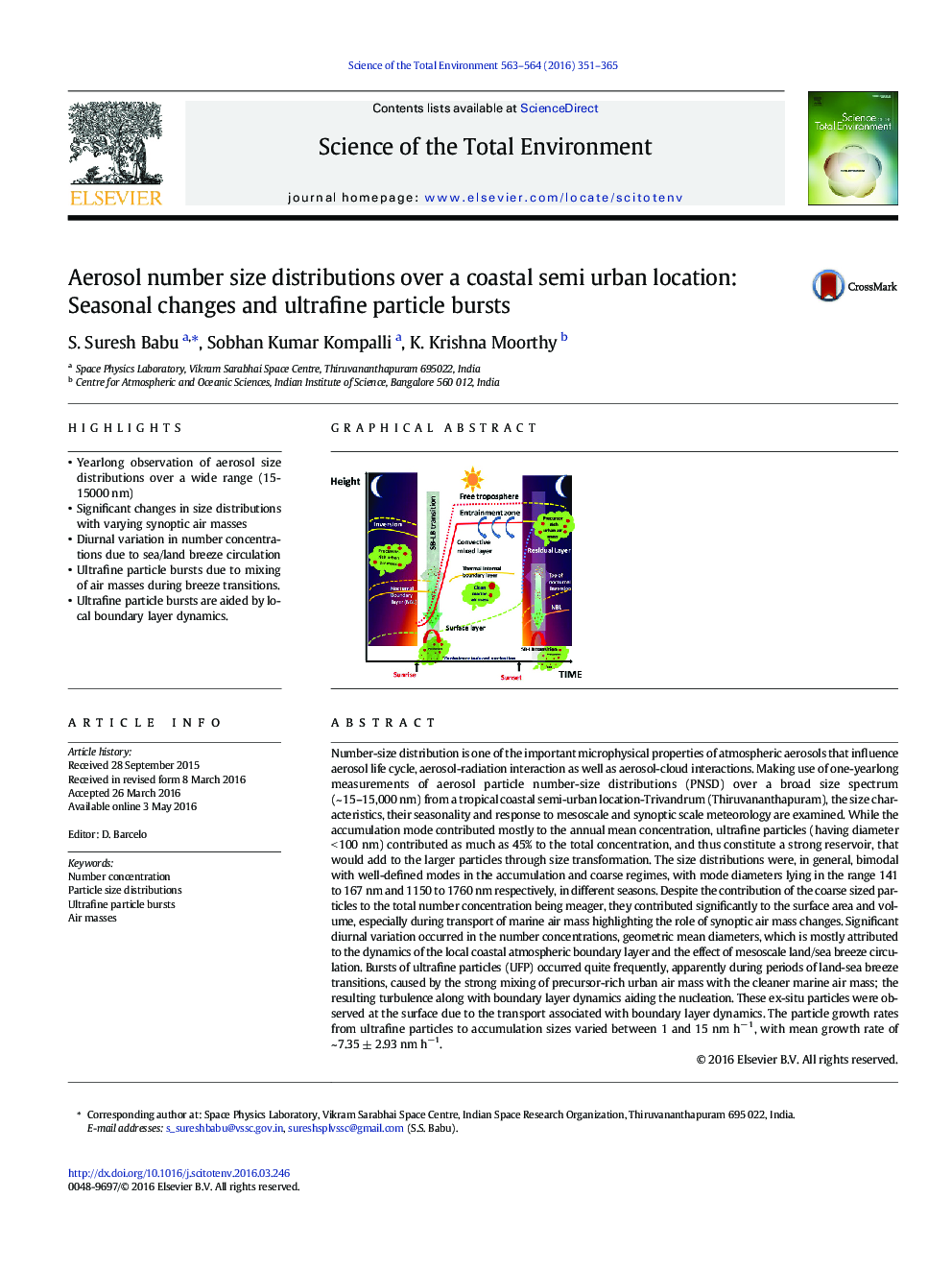| Article ID | Journal | Published Year | Pages | File Type |
|---|---|---|---|---|
| 6321402 | Science of The Total Environment | 2016 | 15 Pages |
â¢Yearlong observation of aerosol size distributions over a wide range (15-15000 nm)â¢Significant changes in size distributions with varying synoptic air massesâ¢Diurnal variation in number concentrations due to sea/land breeze circulationâ¢Ultrafine particle bursts due to mixing of air masses during breeze transitions.â¢Ultrafine particle bursts are aided by local boundary layer dynamics.
Number-size distribution is one of the important microphysical properties of atmospheric aerosols that influence aerosol life cycle, aerosol-radiation interaction as well as aerosol-cloud interactions. Making use of one-yearlong measurements of aerosol particle number-size distributions (PNSD) over a broad size spectrum (~ 15-15,000 nm) from a tropical coastal semi-urban location-Trivandrum (Thiruvananthapuram), the size characteristics, their seasonality and response to mesoscale and synoptic scale meteorology are examined. While the accumulation mode contributed mostly to the annual mean concentration, ultrafine particles (having diameter < 100 nm) contributed as much as 45% to the total concentration, and thus constitute a strong reservoir, that would add to the larger particles through size transformation. The size distributions were, in general, bimodal with well-defined modes in the accumulation and coarse regimes, with mode diameters lying in the range 141 to 167 nm and 1150 to 1760 nm respectively, in different seasons. Despite the contribution of the coarse sized particles to the total number concentration being meager, they contributed significantly to the surface area and volume, especially during transport of marine air mass highlighting the role of synoptic air mass changes. Significant diurnal variation occurred in the number concentrations, geometric mean diameters, which is mostly attributed to the dynamics of the local coastal atmospheric boundary layer and the effect of mesoscale land/sea breeze circulation. Bursts of ultrafine particles (UFP) occurred quite frequently, apparently during periods of land-sea breeze transitions, caused by the strong mixing of precursor-rich urban air mass with the cleaner marine air mass; the resulting turbulence along with boundary layer dynamics aiding the nucleation. These ex-situ particles were observed at the surface due to the transport associated with boundary layer dynamics. The particle growth rates from ultrafine particles to accumulation sizes varied between 1 and 15 nm hâ 1, with mean growth rate of ~ 7.35 ± 2.93 nm hâ 1.
Graphical abstractDownload high-res image (227KB)Download full-size image
